[SSG, Apple II]
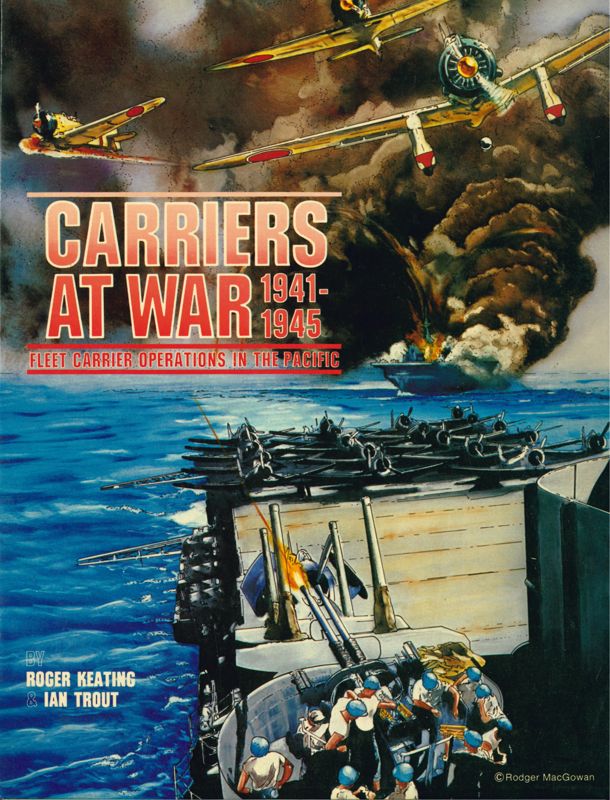
Out of the circa 135 history-based wargames I covered, the Pacific War has been the most popular theme with around 15 titles. Unfortunately, none of these were great and most were downright terrible, with Ken Wright’s streamlined Pacific War the only one I could see myself recommending. Today’s contender is Roger Keating and Ian Trout’s Carriers at War. The duo had designed Reach for the Stars, the game currently sitting at the top of my ranking, and Keating specifically is one of the most veteran developers on the market (8 titles, none of which I scored below one star), so there is a good chance they might break the curse – because if they don’t, who will?
The first good surprise coming from Carriers at Wars is that you can play as the Japanese in solitaire. The first (tutorial) scenario is the Battle of Pearl Harbor where you play the Japanese and can make almost all the mistakes you want because the Americans are blissfully unaware you are there anyway. After playing the Pearl Harbor scenario twice (once by following exactly the tutorial steps, once on my own), I moved to the first battle where the Allies have a fighting chance: the Battle of the Coral Sea. It is my first game immediately after the tutorial, as you will see I made some mistakes and learned from them as I played.
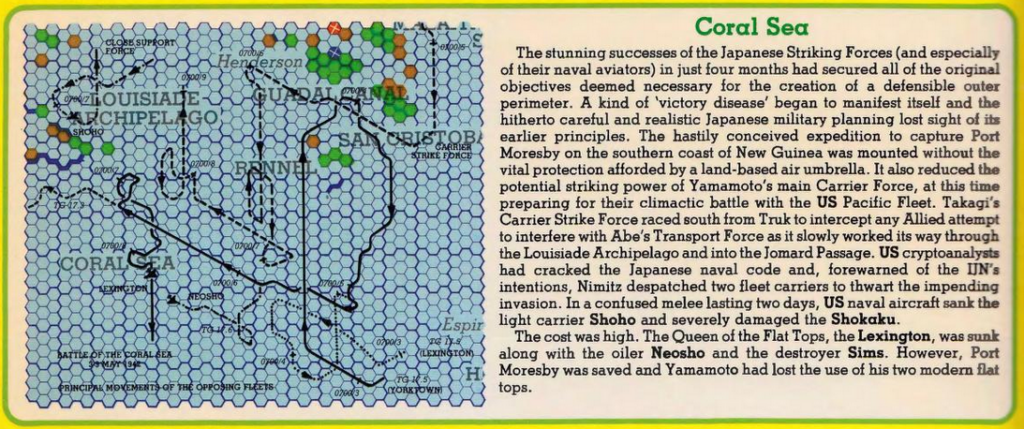
Carriers at War divide the various assets in “command” and let you assign each of these to either a human or a computer. I take the control of the naval force, letting the land-based planes under control of the computer – after all the Imperial Japanese Navy never coordinated well with the Imperial Japanese Army .
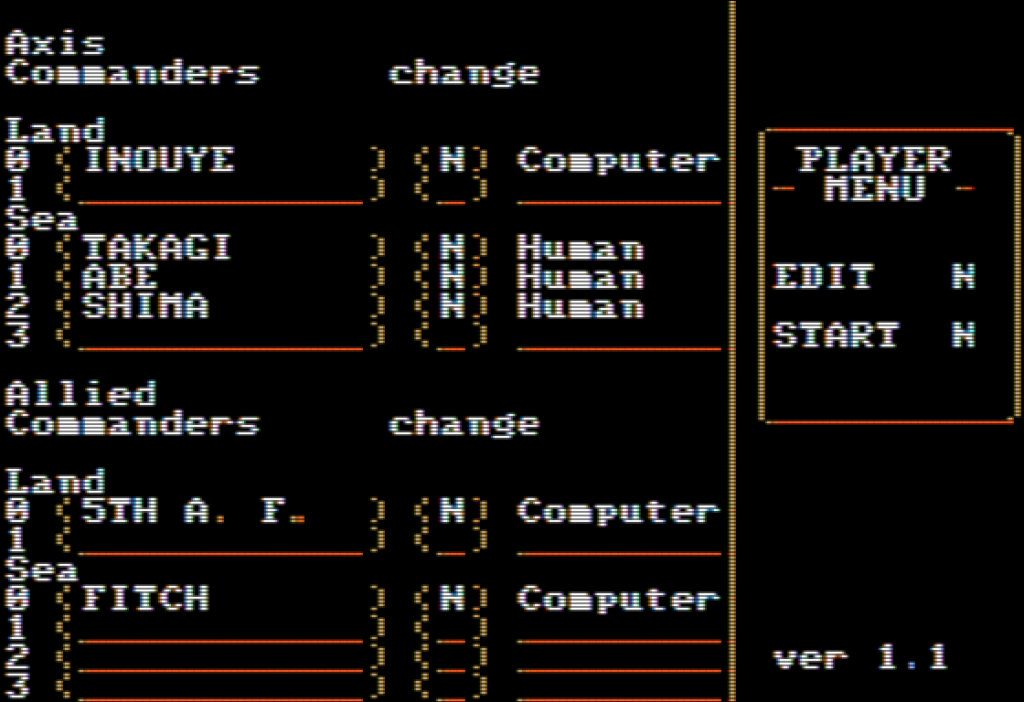
Order of battle
The battle starts on the night between the 3rd and the 4th of May, with no fewer than 7 task forces under my command:
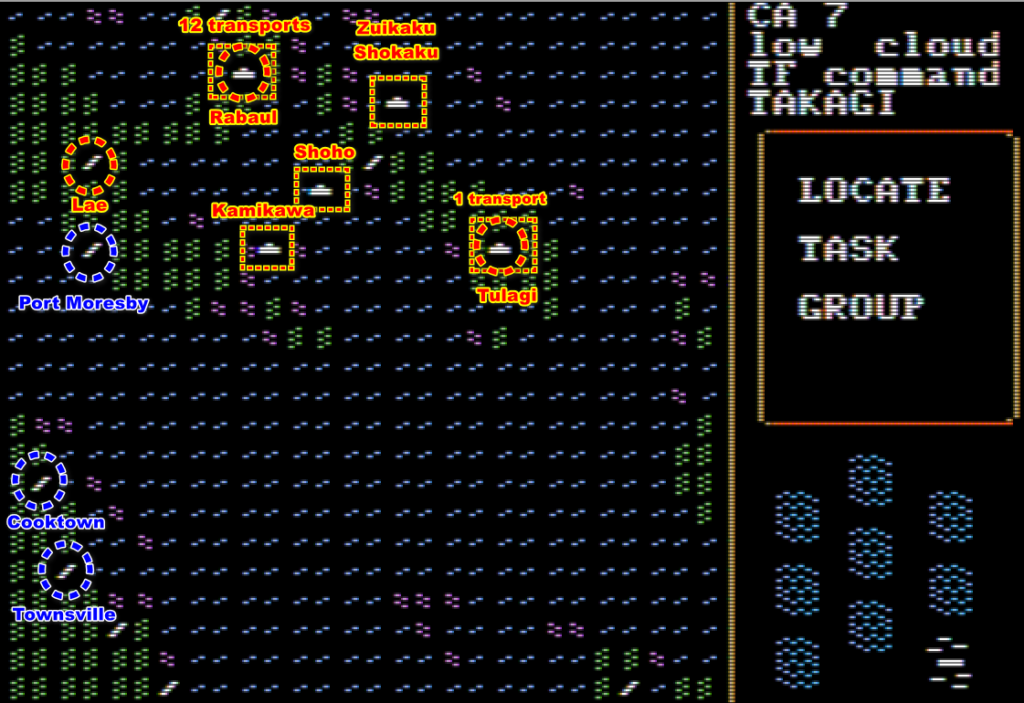
- Takagi’s command has only one task force. It is the most important one however: it includes the Japanese fleet carriers Zuikaku and Shokaku, their 100 planes and a significant escort.
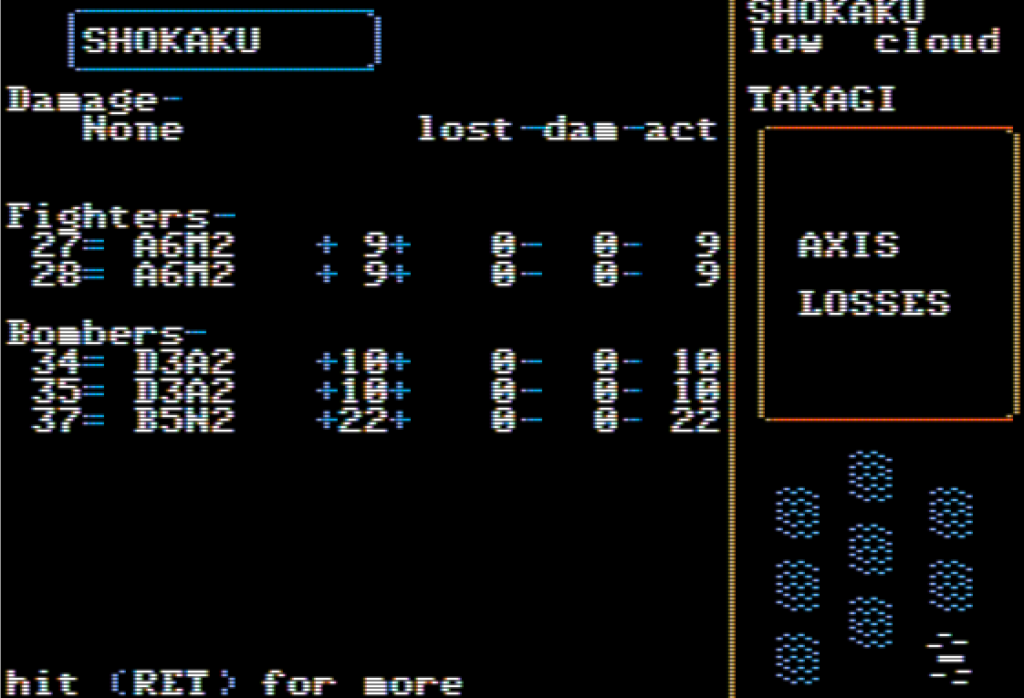
The A6M2 are the Zeke fighters (aka: Zero), the D3A2 the Val dive bombers and the B5N2 the Kate torpedo bombers.
- Abe’s command is the largest, with the invasion fleet, two cruiser fleets, the light carrier Shōhō and a newcomer in my list of important ships of the Pacific War: the seaplane tender Kamikawa Maru, who will play an important role in the upcoming events.
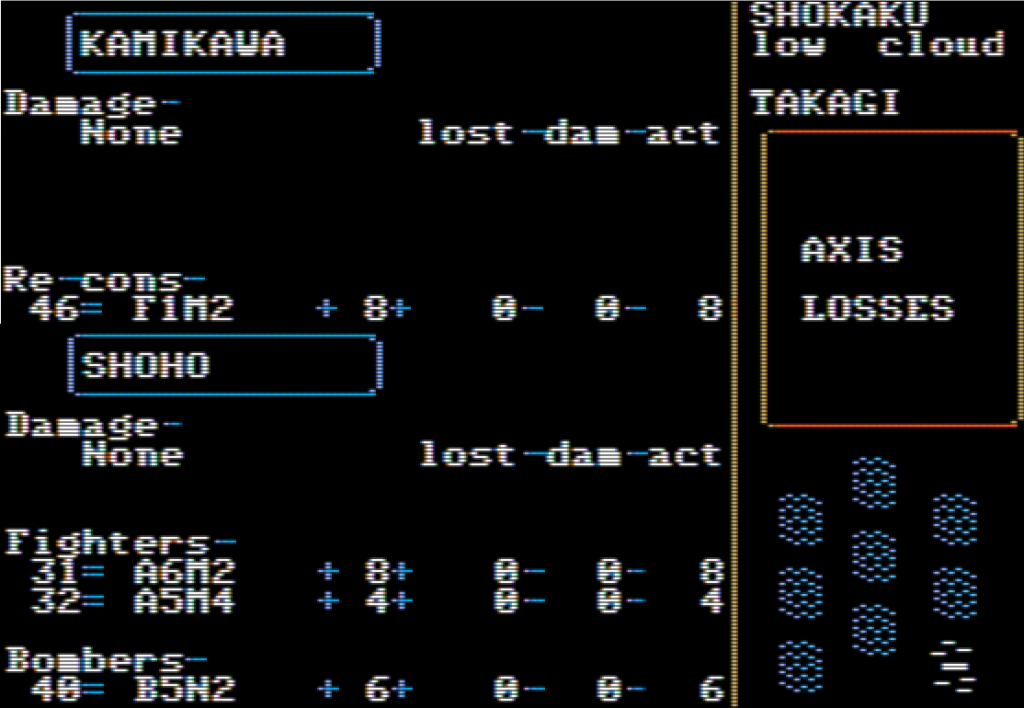
- Finally, Shima’s command are heroes (or villains) of another story: it’s a collection of destroyers, minesweepers and minelayers building a base in Tulagi and historically attacked en passant by the USS Yorktown. It is an irrelevant fleet to start with, and since I will mix up my orders and initially send them North, it will be an irrelevant fleet to end with as well. I won’t mention it ever again.
You may wonder why some fleets like Shima’s are displayed in the middle of a landmass. That’s because the game is played on the strategic map, but the player can also check a tactical map which shows the reality on the ground (or on the sea). When you give orders to your fleets, they are smart enough to navigate around islands without any micromanagement needed.
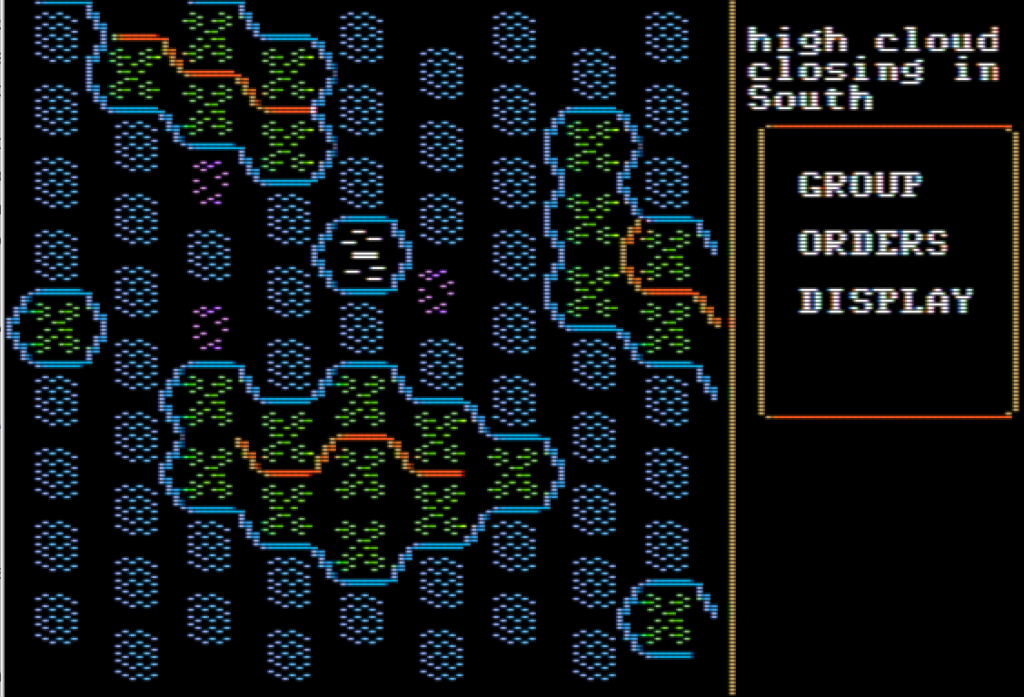
3rd and 4th of May 1942
My initial plan is simple:
- I allocate the Shōhō and one of the cruiser fleets to escort the transports going full steam toward Port Moresby,
- Meanwhile, the Kamikawa Maru will hold her position at the Eastern tip of New Guinea to detect enemy ships for the other cruiser fleet and the carriers to attack.
Not much happens on the first day, but thankfully Carriers at War uses real-time with pause, so unlike some other game I played recently time passes quickly:
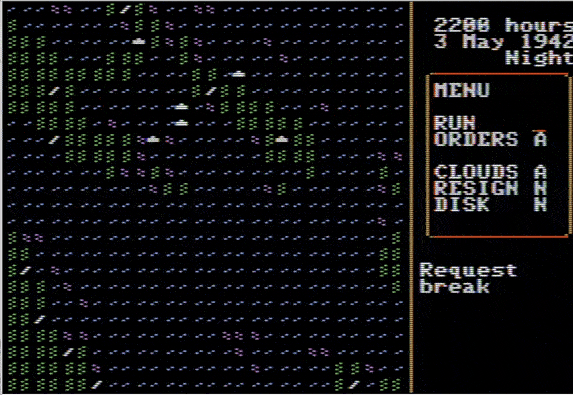
I don’t expect much to happen on the sea on the 4th of May either. In the air, however, my ally musters all its planes for massive raids on Port Moresby, hopefully neutralizing whatever American planes were on the airbase.
At around 12AM, scout planes from the Kamikawa Maru detect an enemy fleet!
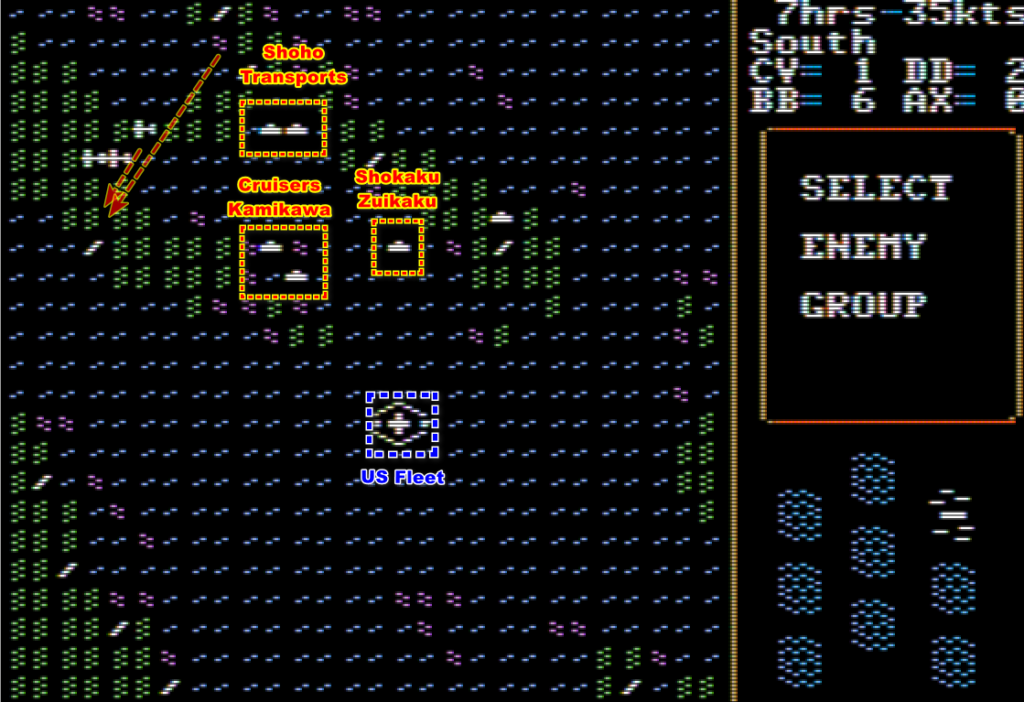
I have played enough Pacific War games to remember that early war, the Japanese planes outrange the American planes, so my plan is to send planes from the maximum possible distance. I am out of range at the moment (Carriers at War won’t let you send planes if they won’t have the fuel to return), so I order the Shokaku and Zuikaku to move due South. I also transfer Zero fighters and Kate torpedo bombers from the hold to the deck and arm them so they can take off the minute I am in range.
Unfortunately, I am still new to this, so it takes me some time to realize I am not moving South at full speed. I correct the issue but only arrive at range around 4PM, which is late in the day. Since I am, again, new at this, I still order my planes to take off. By the time they arrive on the location of the US fleet, it is dusk and they can’t find their target.
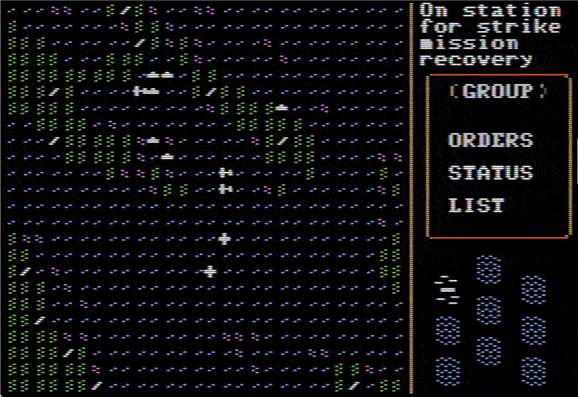
My planes return to their carrier and land during the night, which is not ideal. Two zeros crash while trying to land and some other planes are damaged. Not a great start.
5th of May
The US fleet was heading South when it disappeared into the night, so I am confident I can advance my carriers more to the South. In the morning of the 5th of May, it is stationing South-East of New Guinea, with the Kate on deck and really to take off.
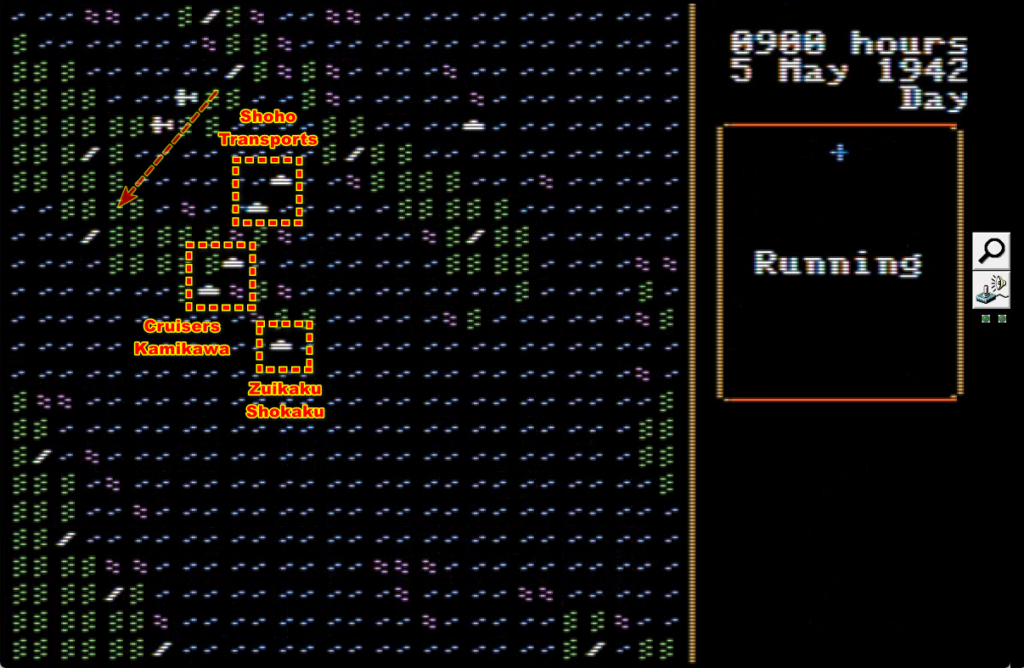
I keep planes on deck for the whole day – I occasionally rotate them to preserve the pilots’s fatigue.
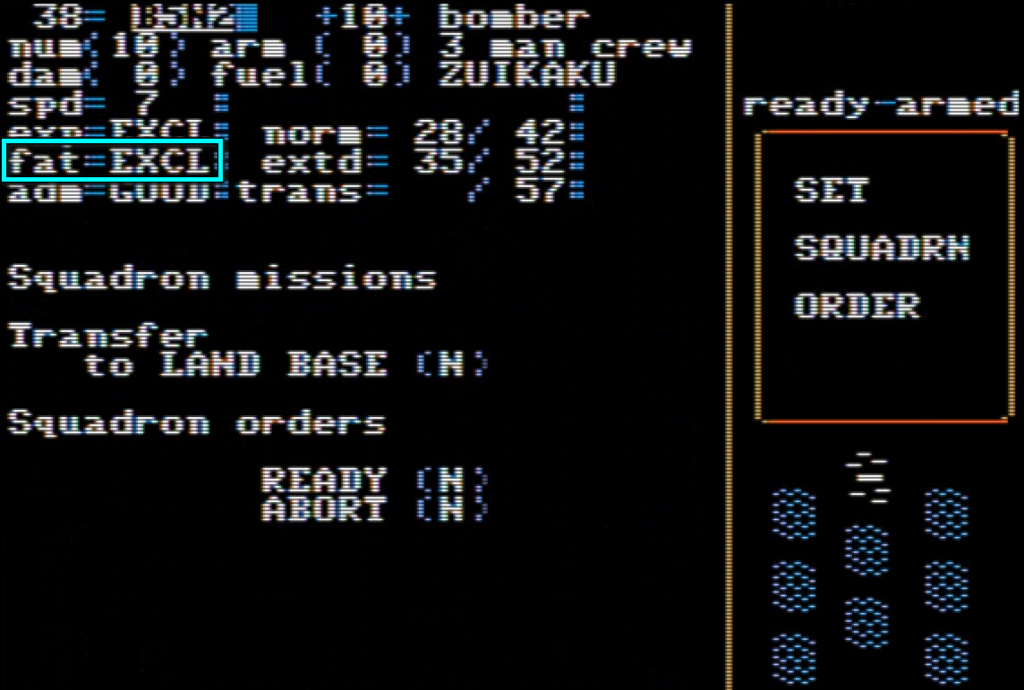
Still, no sighting of the enemy fleet that day. All the action is monopolized by my ally bombing Port Moresby again. From the reports I receive, losses in planes are small for both sides, from which I conclude that the airbase itself is either suppressed or unused.
6th of May
I assume that Port Moresby is neutralized and move my fleet carriers just South of it. I also advance the Kamikawa Maru, but find out that it can only launch seaplanes from an “anchor position”, and there are none where I moved, so during the day she will return to her starting location.
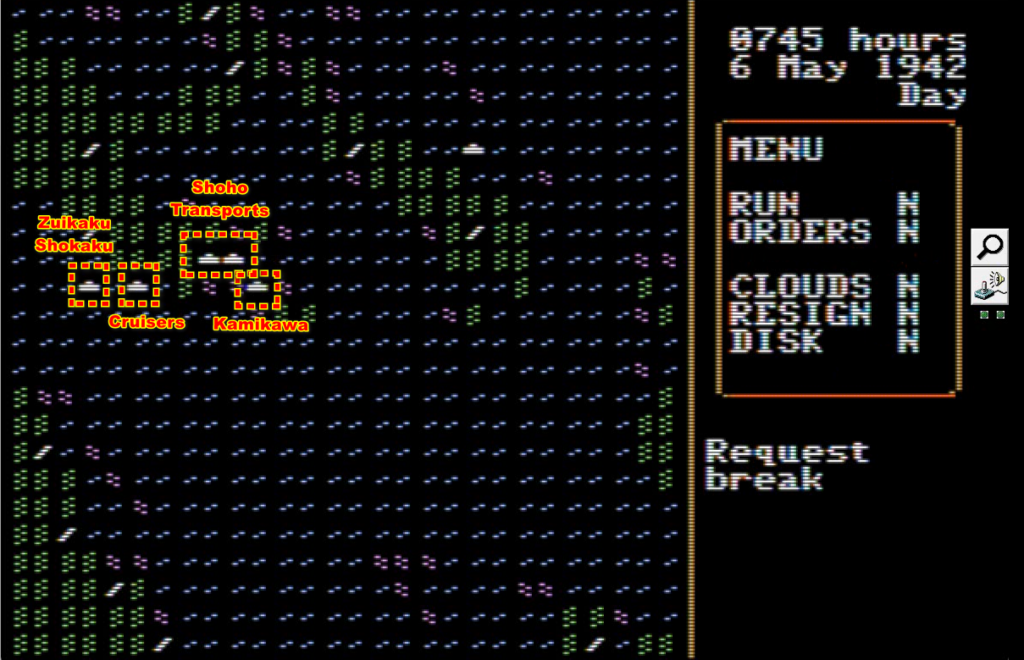
This location may seem exposed, but I reckon that Port Moresby is neutralized, and in this position I can minimize the “search directions” of my scouts, making them more likely to find targets quickly and leaving more planes available for Combat Air Patrol.
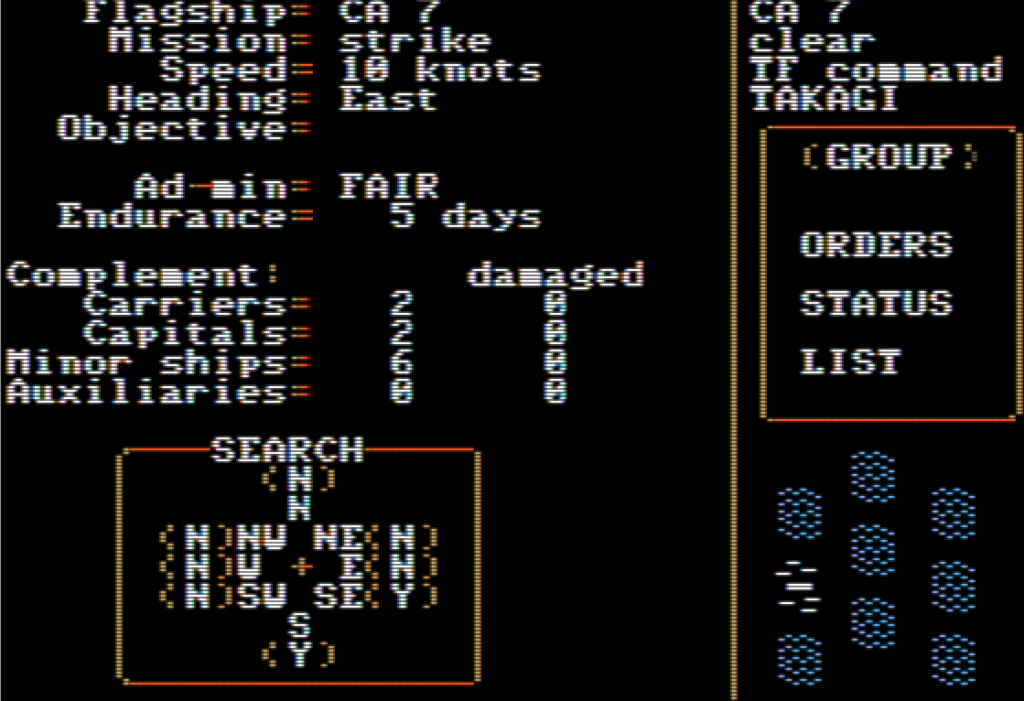
Whatever the case, that’s another day where all I see is the sun glowing red and the sky turning blue. As for my ally, he continues to pummel Port Moresby, and this time they report significant damage to the American air force – but I don’t trust these reports:
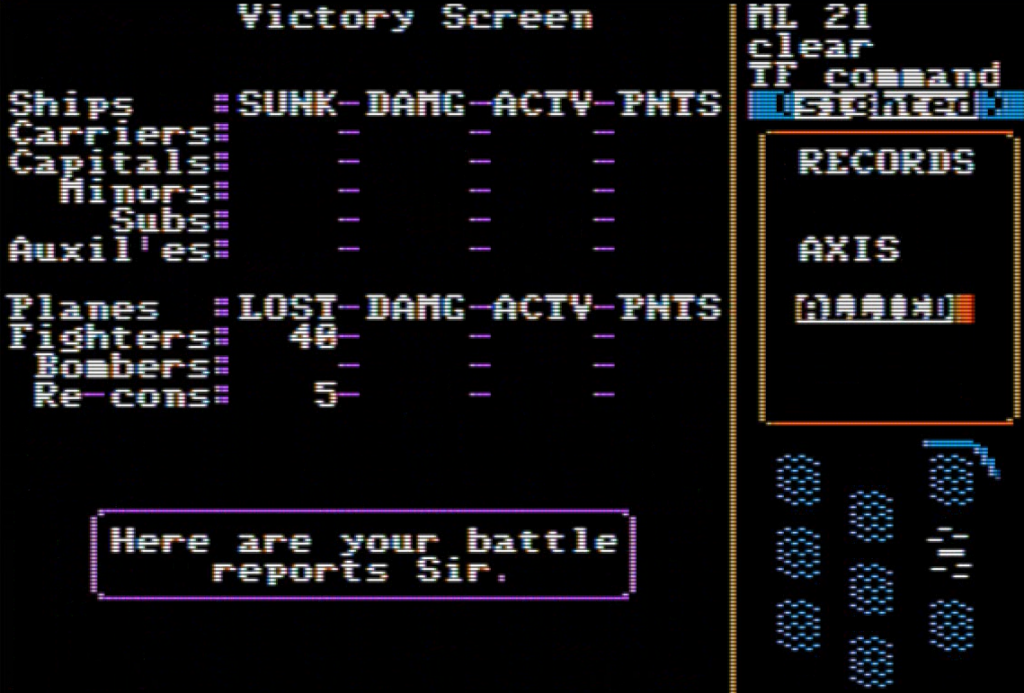
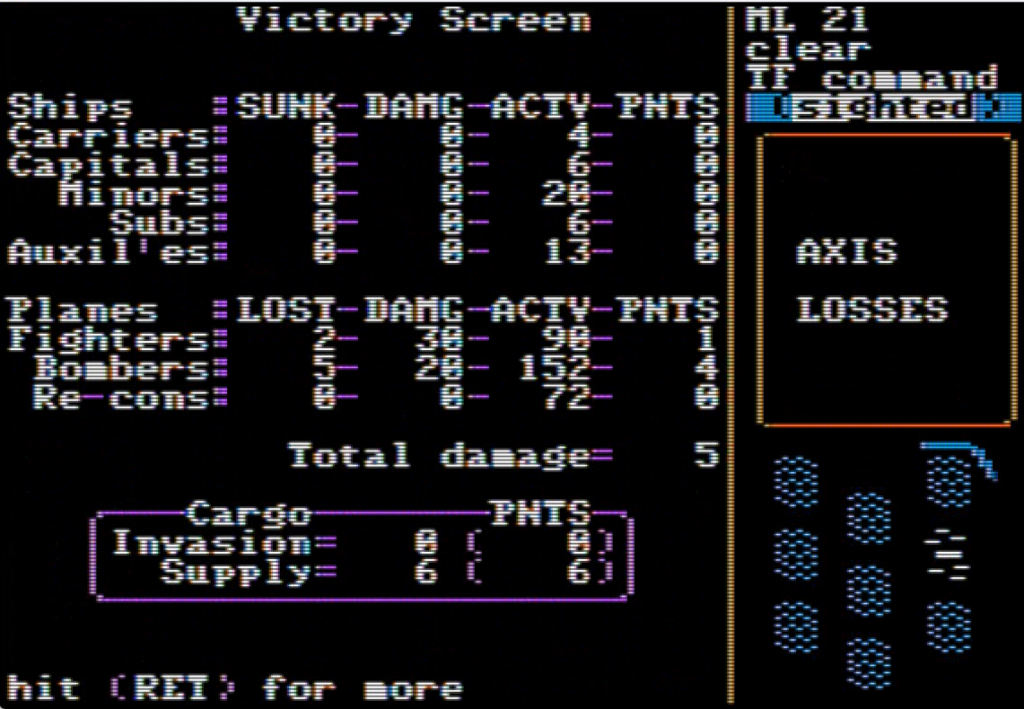
Damaged planes are repaired over time. By the 6th of May, I repaired almost all the planes that were damaged in the night landing.
The numbers seem particularly shifty given our own air losses are marginal: I lost 2 fighters in that night landing and I know a bomber from the Shōhō crashed in a random operational accident, so the Imperial Japanese Army wants me to believe they destroyed 40 allied fighters for the loss of only 3 planes on their side, accidents and AA included?

7th of May
The 7th of May starts like the other days, with planes on the deck of my two fleet carriers and the Kamikawa Maru sending seaplanes from her starting position. The transports have almost arrived, so I suppose something will happen today.
I am correct, and a US fleet with allegedly no fewer than 3 carriers is detected at 9 AM!
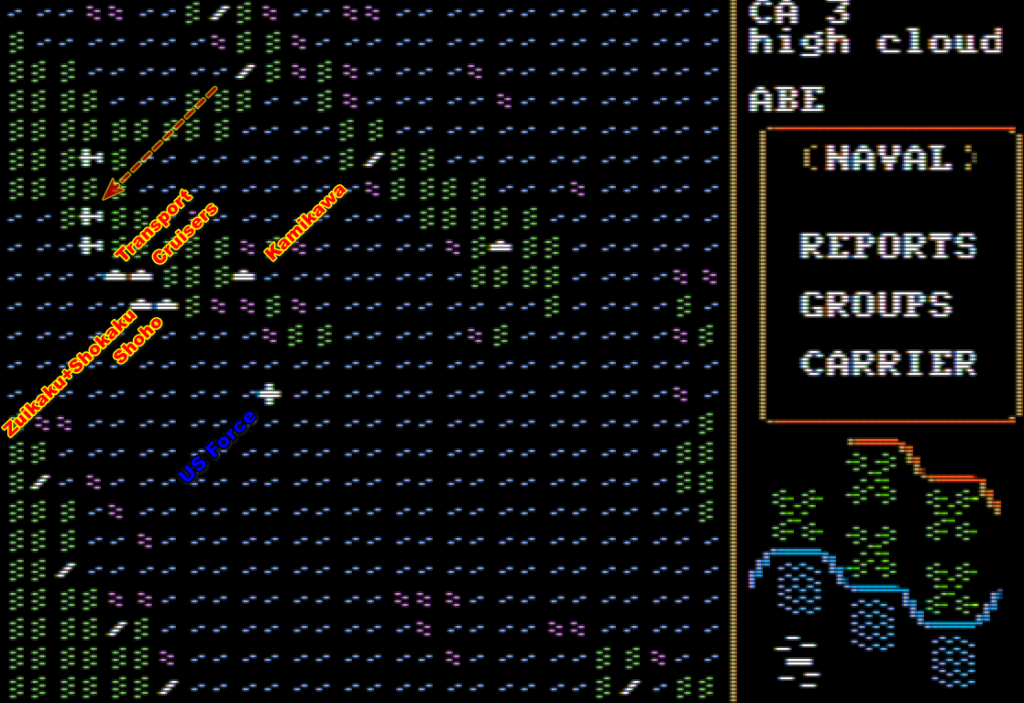
I could not be in a more favourable position: the Americans are in range, not hidden by any cloud and my planes are on deck. Meanwhile, the Zuikaku and the Shokaku are surrounded by clouds or worse that will protect them, but their exact location has a clear blue sky so they can launch their planes: 34 Kates escorted by 18 Zeros!
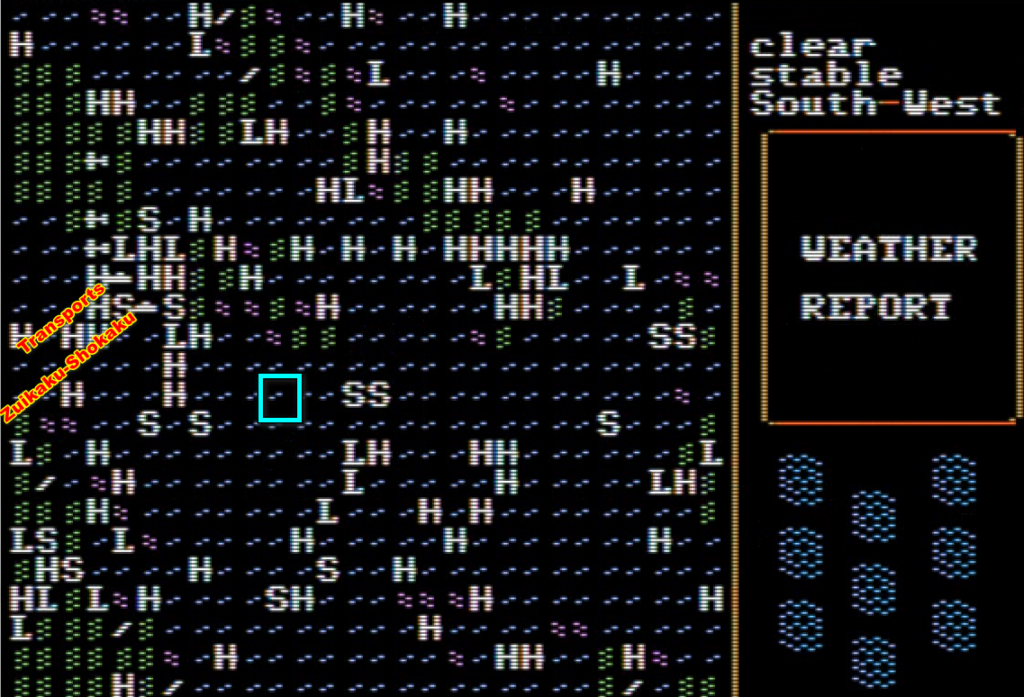
This time, my bombers find their targets, and even more targets as they find out there is another American task force next to the one I initially detected. Even better, they find American and Australian ships, but they don’t encounter many American planes, presumably because a good chunk of them are on their way to the Kamikawa Maru!
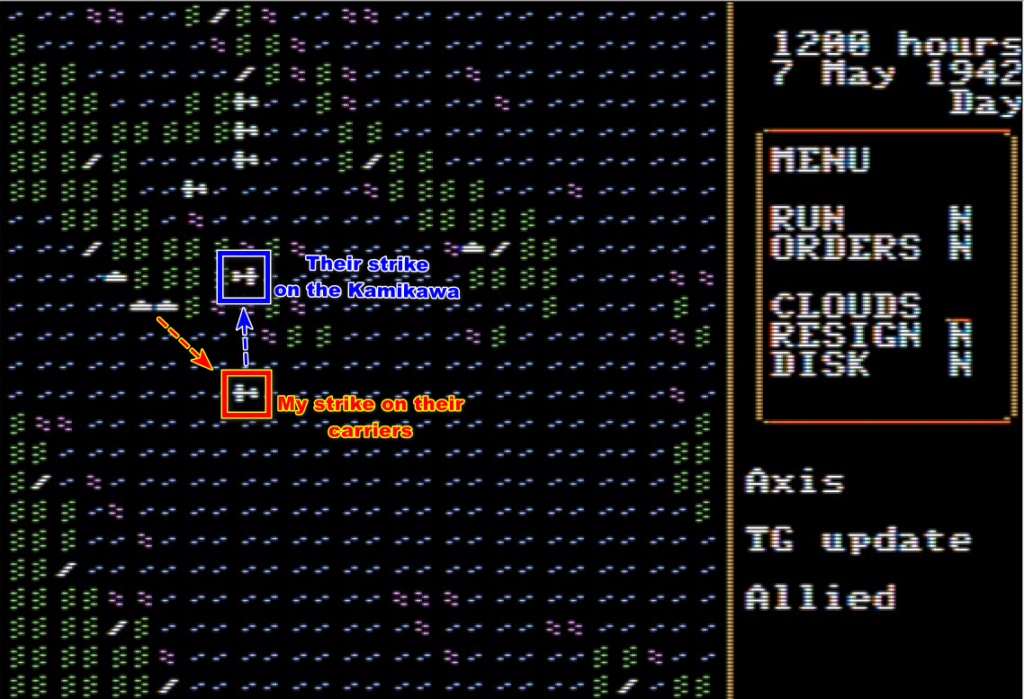
Meanwhile, I send my last wing of Kate (I had not realized that unlike the Shokaku, the Zuikaku had two such wings) along with some escort. Carriers that have sent planes cannot move, so I cannot approach further to launch my Val dive bombers. As for the Shōhō, it is never able to contribute: the squall damaged 2 of its 5 remaining Kate, and the threshold to send strikes is 4 active planes in the squadron.
The Americans never retaliate against my fleet carrier which I believe remained undetected the whole day. By the end of the day, my reports claim one carrier sunk and another damaged. The report may be exaggerated, but if one of the carriers is damaged and neutralized, that’s good enough for me for now – and that hypothesis is likely, because where else would those 60 lost bombers come from?
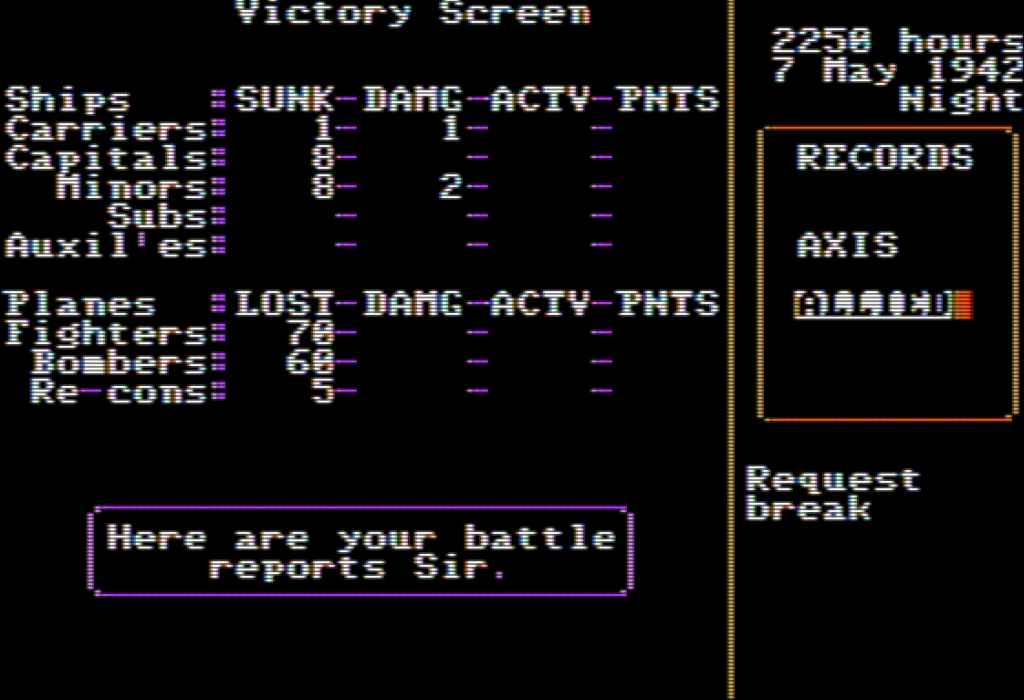
Alas, the Kamikawa Maru won’t be lovingly tending to seaplanes any more – the American planes put an end to this feel-good movie – and her two escorting cruisers went down with her.
8th of May
My transports unloaded their cargo of men during the night, or maybe earlier as I was focused on sending air strikes and not paying much attention. All that’s left for me to do is to destroy the American fleet, if I can.
Well, I don’t have to look for it for long: it appears right beside me at 9 in the morning.
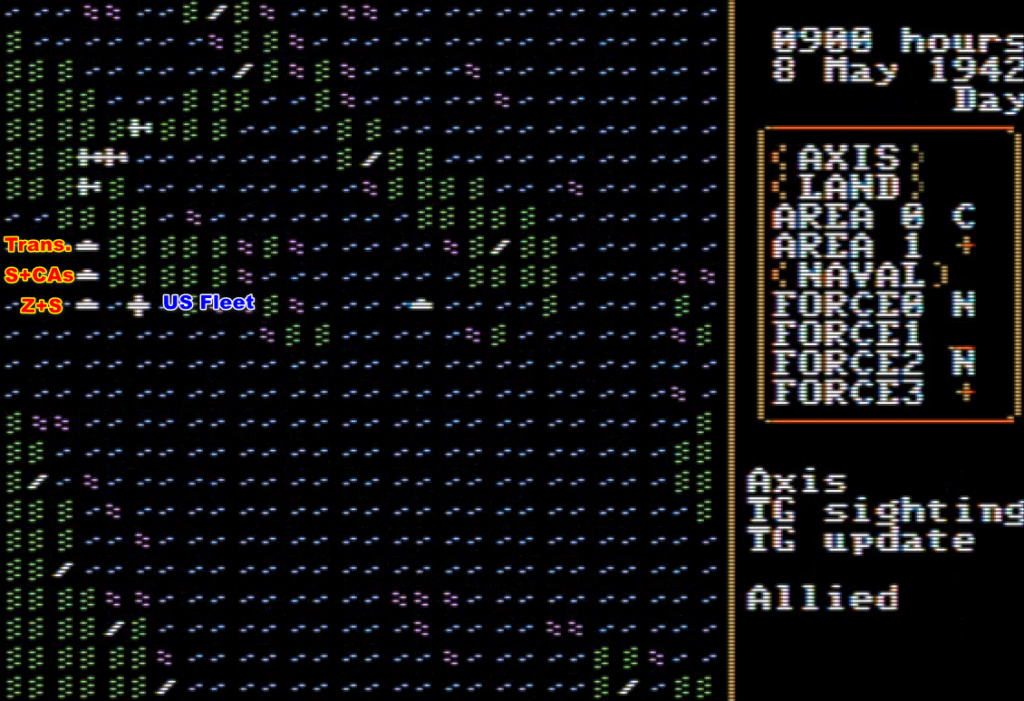
The sun had risen two hours earlier, but no one could see anything due to the terrible weather South of Port Moresby:
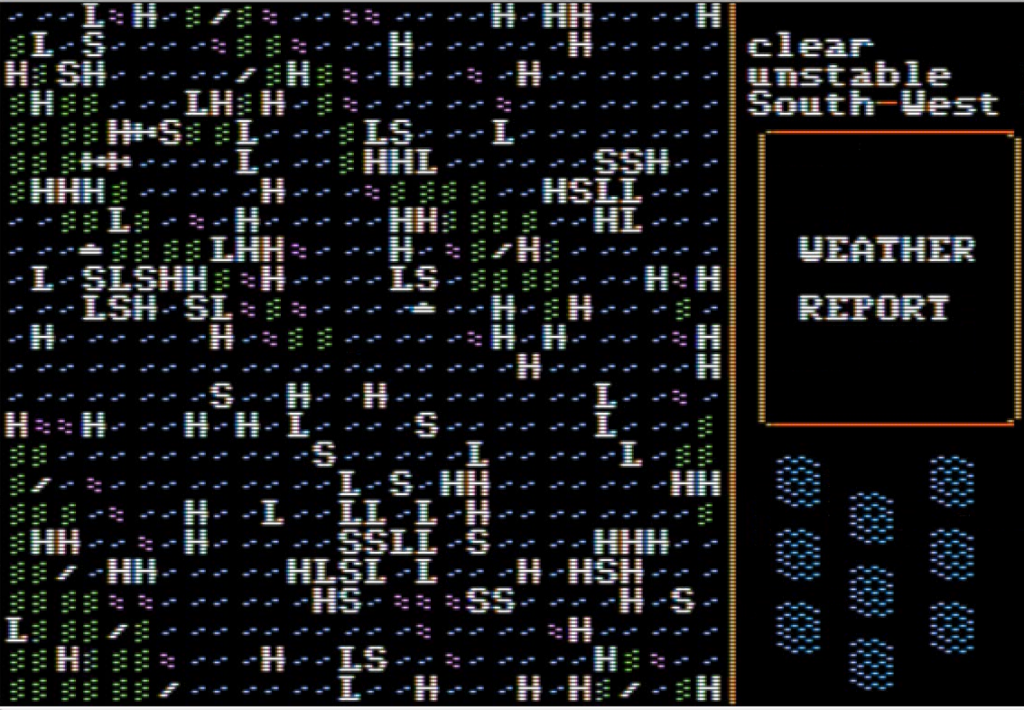
I immediately send all the planes I have on deck, and then all the squadrons I have as they are ready. In the attack the previous days, I did “cohesive strikes”, according to which the planes regrouped above my carriers before attacking, but no time for that here – if you are armed and your engine is ready you are authorized to go!
Meanwhile, the Americans do exactly the same, and soon Dauntless bombers circle ominously above the Zuikaku and the Shokaku…
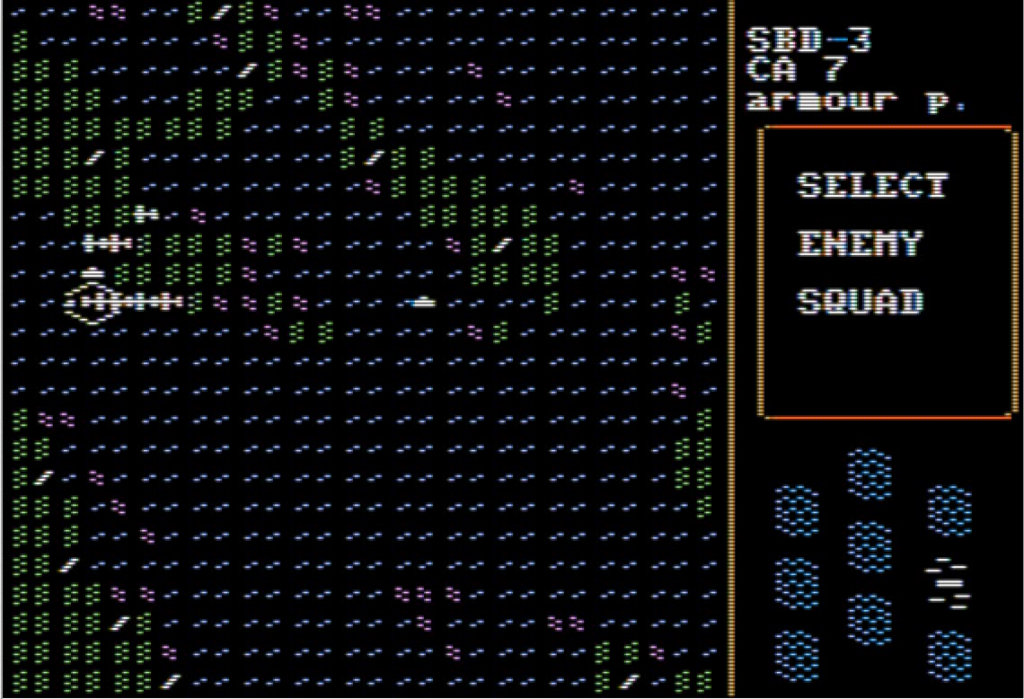
…but they never attack. A bout of squall passes over my ships, hiding them. Granted, it also prevents me, for a time, to send my planes and damage the ones I have on deck, but not as much as a bomb would anyway so I am OK with this. The Dauntless move to the next target, the hapless Shōhō and some cruisers that were passing by while heading for the US fleet. The Shōhō is damaged and out of action, and the cruisers receive light to moderate damage.
That’s the moment where I remember that I can zoom and check the situation – not that it helps:
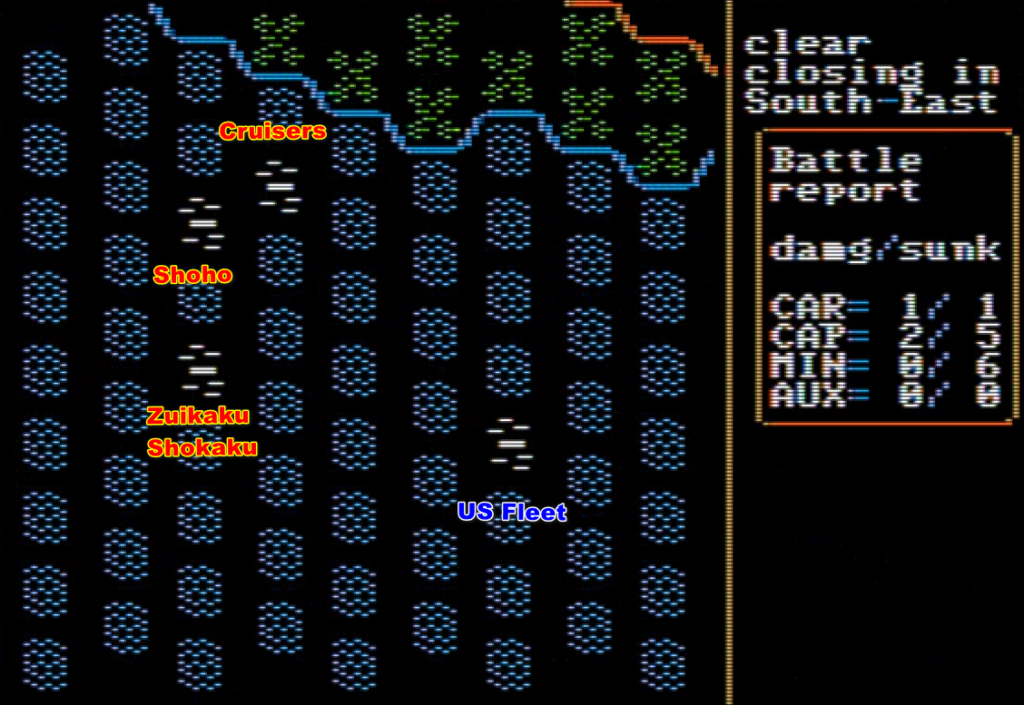
For the rest of the day, I send my planes as soon as I can, whenever the weather allows me. By the afternoon, the American planes disappear from the sky, I suppose the carriers are unable to send them anymore.
My cruisers, slowed down by the damage they received from the Dauntless, never reach the American fleet, and the latter disappears into the night. I check the damage report. I have neutralized 4 US carriers out of the 2 they have, so I guess I won’t see any of them again.
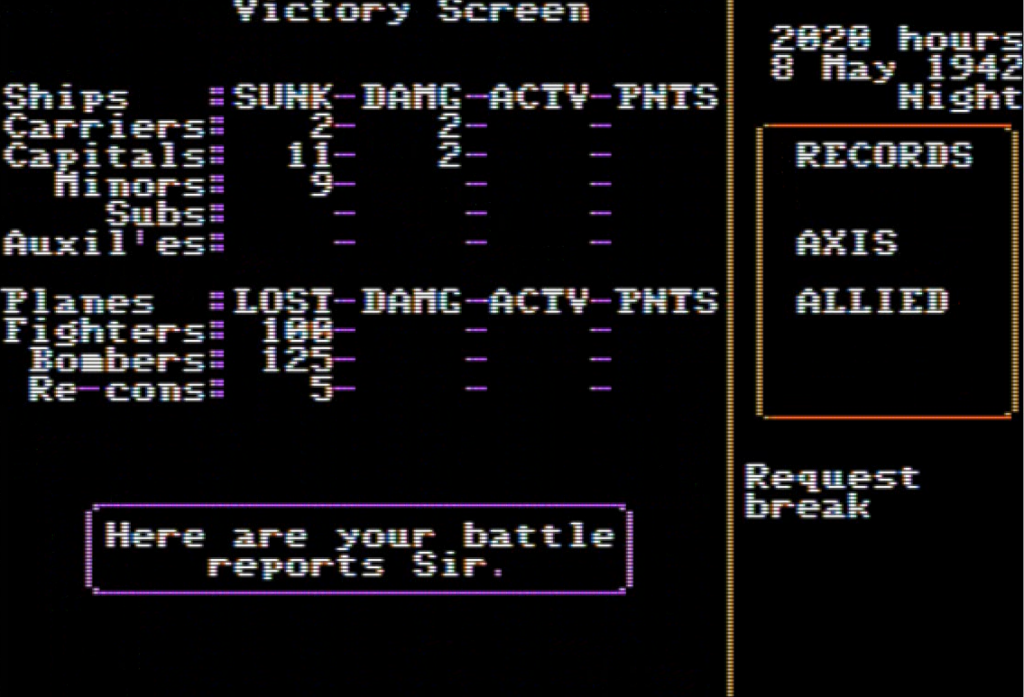
Aftermath
Nothing happens on the 9th, except the Shōhō finally succumbing to her damage and sinking – I don’t think she contributed anything in this battle except as a decoy.
It is the end of the battle with a decisive Japanese victory.
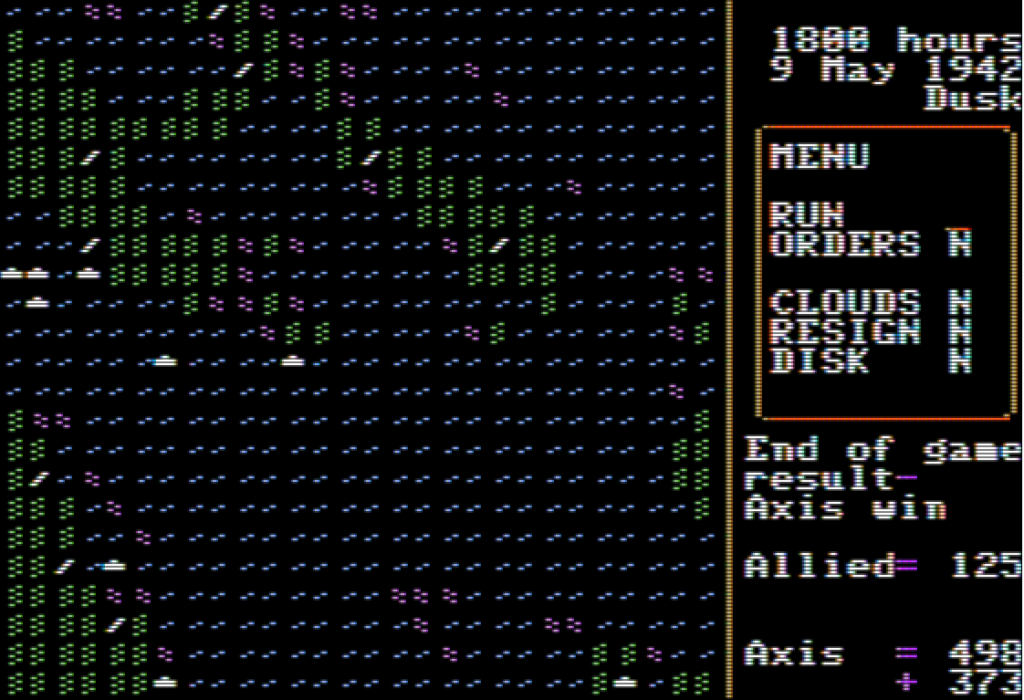
I can now check the final status from the allied point of view. It is brutal: I sank both the Yorktown and the Lexington, only leaving as a floating “carrier” the seaplane tender Tangier. The Allied also lost more than 200 planes.
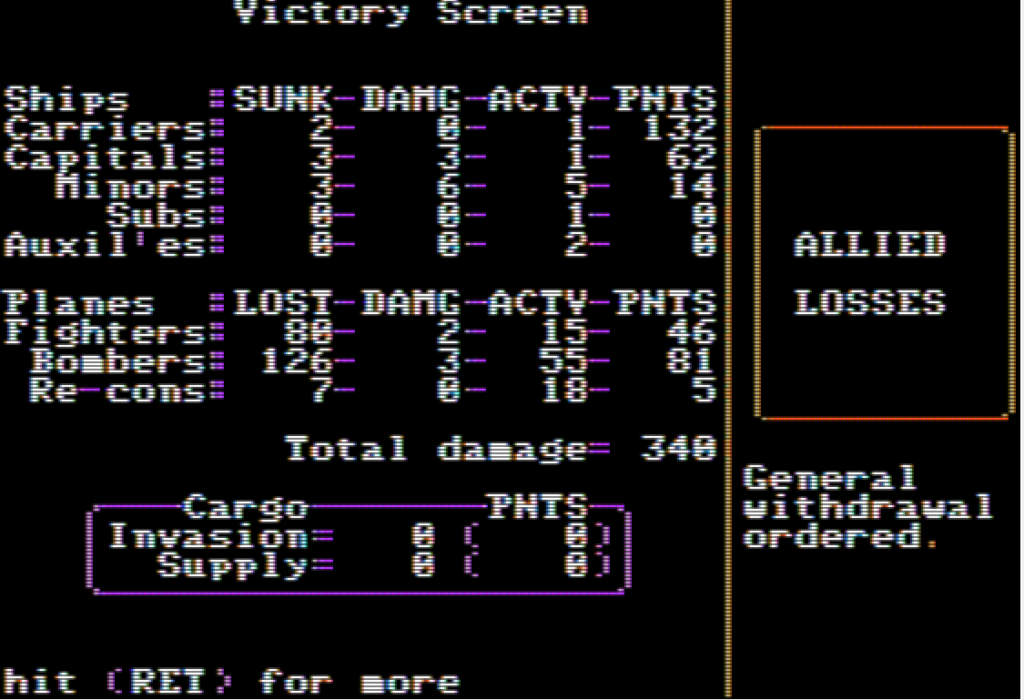
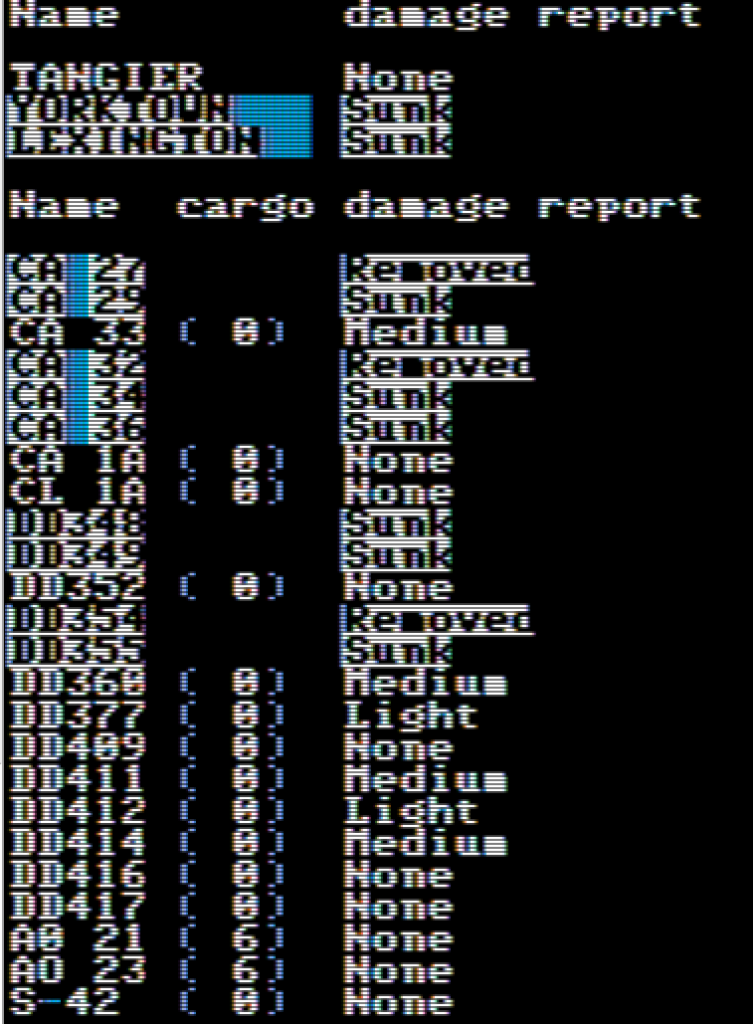
On the Japanese side, the total losses are 60 planes and 5 ships: the Shōhō, the Kamikawa Maru and three cruisers.
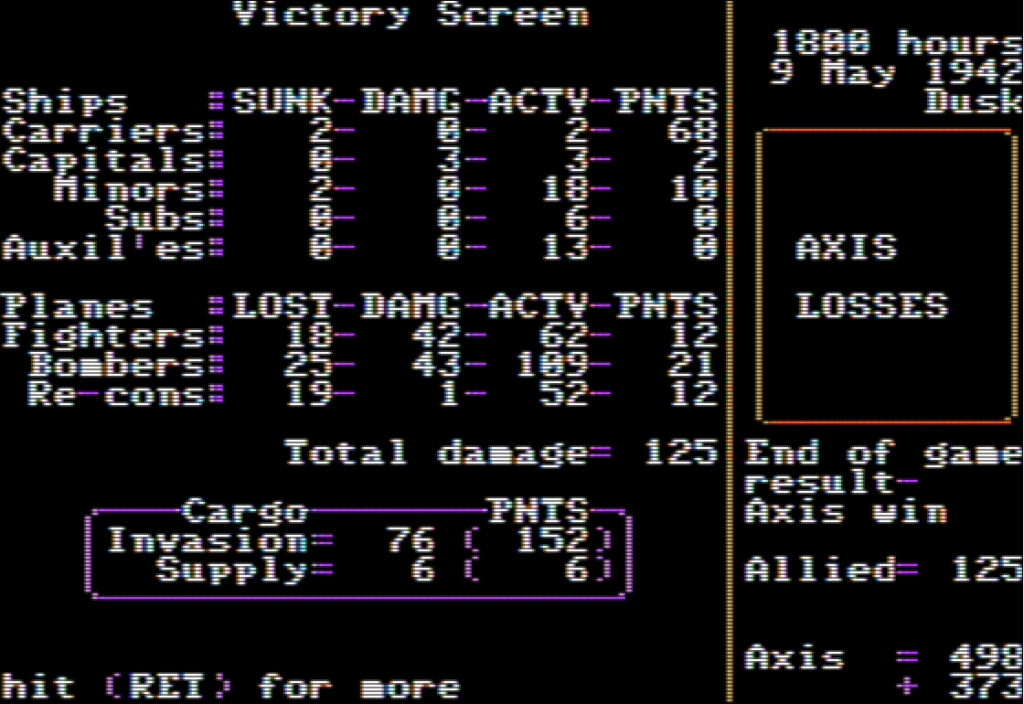
This is a decisive victory for the Japanese, way above the historical performance. In real life, the Japanese did not take Port Moresby, did not sink the Yorktown, lost the Shōhō all the same, and had to retire the Shokaku and the Zuikaku from the frontline for a few months.
Unfortunately, the game does not tell you when you sank the enemy ships. I suspect I neutralized one carrier with my long-range strike on the 7th, which explains why I received so few losses in the short-range melee the 8th of May. If true, the cause of my victory (beyond “being lucky”, always a factor in those hide-and-seek carrier games) may have come down to having always kept my long-range planes on deck with a fresh crew. Of course, it could have backfired dramatically if the Americans had managed to have the jump on me, but then they didn’t.
For now, Carriers at War has been a superb experience, and I applaud Trout and Keating’s choice to automate the micromanagement to leave the meaningful decisions to the player:
- You don’t need to calculate whether your planes have the range for a mission, the game blocks you from sending them if you don’t have it,
- You don’t manually move most of your fleets, you tell them what to do (escort, support, etc) and let them do it,
- You don’t move your scouting planes, you tell them in which direction to search and let them do it,
- You don’t allocate your planes in and out of Combat Air Patrol, they do it on their own depending on the known threat level.
Thanks to this automatisation, the whole battle took only around two hours to play, a relatively short but decision-intensive experience, quite the opposite of Gary Grigsby’s games.
However, there are still features I don’t understand well: where can the seaplane tenders anchor? Why was the max speed of all my fleets 10 knots at the end of the battle when it started at 35 knots? Does having planes on the deck prevent CAP and/or scouts missions from occurring? The manual could be clearer and more exhaustive, but I suppose I will have to learn it on the go as I next play the battle of Midway!
Edit 19/11/2024: I found out you can resign anytime in a game, and then it shows the situation of both sides. I checked my save of the 7th of May and can confirm that my long-range attack had sunk the USS Yorktown. I also saw that Port Moresby was neutralized on the 4th of May and its stranded planes were destroyed in the following days, so my ally was not lying after all.
5 Comments
The Emperor will be well chuffed. This looks like a QUALITY game with some interesting choices, kudos!
Maybe your fleets have got their hulls covered in barnacles which is why they are slower at the end?
Obviously, the treacherous barnacles are working for the enemy.
It’s still immensely amusing to me how in the Pacific War wargame market we needed to have 15+ titles and several years of this blog before you could play the Japanese in single player.
And it’s the best one of the lot until now.
Perhaps having work going on the deck, moving planes around, launching planes, recovering them, and etc, limits the speed of your carriers?
Great timing! I read/skimmed all the PDFs of SSG’s old Run 5 magazine from Roger Keating’s web site just in the last 3-4 evenings. Never played any of SSG’s wargames from last century, but I am looking forward to doing so now. At least the land warfare games, but it is promising that this one looks good so far.